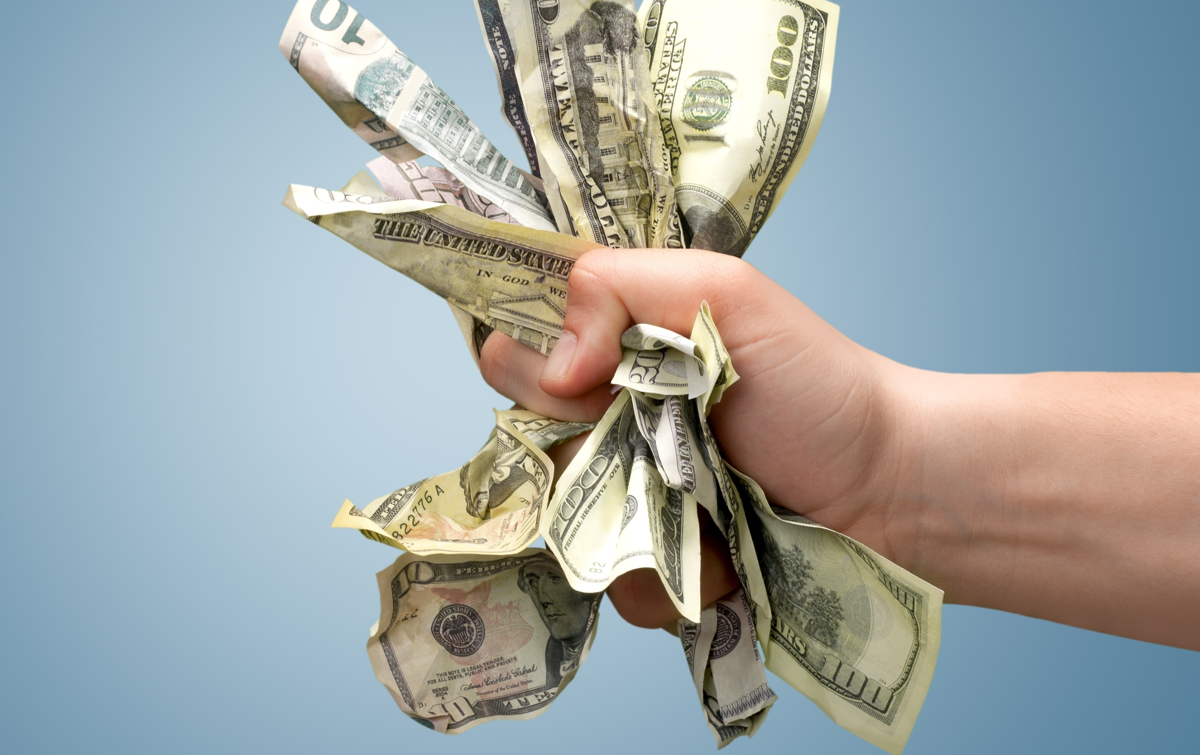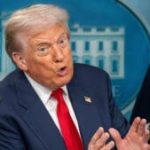
Money is a crucial command post of any economy, and therefore of any society. Society rests upon a network of voluntary exchanges, also known as the “free-market economy”; these exchanges imply a division of labor in society, in which producers of eggs, nails, horses, lumber, and immaterial services such as teaching, medical care, and concerts, exchange their goods for the goods of others. At each step of the way, every participant in exchange benefits immeasurably, for if everyone were forced to be self-sufficient, those few who managed to survive would be reduced to a pitiful standard of living.
Direct exchange of goods and services, also known as “barter,” is hopelessly unproductive beyond the most primitive level, and indeed every “primitive” tribe soon found its way to the discovery of the tremendous benefits of arriving, on the market, at one particularly marketable commodity, one in general demand, to use as a “medium” of “indirect exchange.” If a particular commodity is in widespread use as a medium in a society, then that general medium of exchange is called “money.”
The money-commodity becomes one term in every single one of the innumerable exchanges in the market economy. I sell my services as a teacher for money; I use that money to buy groceries, typewriters, or travel accommodations; and these producers in turn use the money to pay their workers, to buy equipment and inventory, and pay rent for their buildings. Hence the ever-present temptation for one or more groups to seize control of the vital money-supply function.
Many useful goods have been chosen as moneys in human societies. Salt in Africa, sugar in the Caribbean, fish in colonial New England, tobacco in the colonial Chesapeake Bay region, cowrie shells, iron hoes, and many other commodities have been used as moneys. Not only do these moneys serve as media of exchange; they enable individuals and business firms to engage in the “calculation” necessary to any advanced economy. Moneys are traded and reckoned in terms of a currency unit, almost always units of weight. Tobacco, for example, was reckoned in pound weights. Prices of other goods and services could be figured in terms of pounds of tobacco; a certain horse might be worth 80 pounds on the market. A business firm could then calculate its profit or loss for the previous month; it could figure that its income for the past month was 1,000 pounds and its expenditures 800 pounds, netting it a 200 pound profit.
Gold or Government Paper
Throughout history, two commodities have been able to outcompete all other goods and be chosen on the market as money; two precious metals, gold and silver (with copper coming in when one of the other precious metals was not available). Gold and silver abounded in what we can call “moneyable” qualities, qualities that rendered them superior to all other commodities. They are in rare enough supply that their value will be stable, and of high value per unit weight; hence pieces of gold or silver will be easily portable, and usable in day-to-day transactions; they are rare enough too, so that there is little likelihood of sudden discoveries or increases in supply. They are durable so that they can last virtually forever, and so they provide a sage “store of value” for the future. And gold and silver are divisible, so that they can be divided into small pieces without losing their value; unlike diamonds, for example, they are homogeneous, so that one ounce of gold will be of equal value to any other.
The universal and ancient use of gold and silver as moneys was pointed out by the first great monetary theorist, the eminent fourteenth-century French scholastic Jean Buridan, and then in all discussions of money down to money and banking textbooks until the Western governments abolished the gold standard in the early 1930s. Franklin D. Roosevelt joined in this deed by taking the United States off gold in 1933.
There is no aspect of the free-market economy that has suffered more scorn and contempt from “modern” economists, whether frankly statist Keynesians or allegedly “free market” Chicagoites, than has gold. Gold, not long ago hailed as the basic staple and groundwork of any sound monetary system, is now regularly denounced as a “fetish” or, as in the case of Keynes, as a “barbarous relic.” Well, gold is indeed a “relic” of barbarism in one sense; no “barbarian” worth his salt would ever have accepted the phony paper and bank credit that we modern sophisticates have been bamboozled into using as money.
But “gold bugs” are not fetishists; we don’t fit the standard image of misers running their fingers through their hoard of gold coins while cackling in sinister fashion. The great thing about gold is that it, and only it, is money supplied by the free market, by the people at work. For the stark choice before us always is: gold (or silver), or government. Gold is market money, a commodity which must be supplied by being dug out of the ground and then processed; but government, on the contrary, supplies virtually costless paper money or bank checks out of thin air.
We know, in the first place, that all government operation is wasteful, inefficient, and serves the bureaucrat rather than the consumer. Would we prefer to have shoes produced by competitive private firms on the free market, or by a giant monopoly of the federal government? The function of supplying money could be handled no better by government. But the situation in money is far worse than for shoes or any other commodity. If the government produces shoes, at least they might be worn, even though they might be high-priced, fit badly, and not satisfy consumer wants.
Money is different from all other commodities: other things being equal, more shoes, or more discoveries of oil or copper benefit society, since they help alleviate natural scarcity. But once a commodity is established as a money on the market, no more money at all is needed. Since the only use of money is for exchange and reckoning, more dollars or pounds or marks in circulation cannot confer a social benefit: they will simply dilute the exchange value of every existing dollar or pound or mark. So it is a great boon that gold or silver are scarce and are costly to increase in supply.
But if government manages to establish paper tickets or bank credit as money, as equivalent to gold grams or ounces, then the government, as dominant money-supplier, becomes free to create money costlessly and at will. As a result, this “inflation” of the money supply destroys the value of the dollar or pound, drives up prices, cripples economic calculation, and hobbles and seriously damages the workings of the market economy.
The natural tendency of government, once in charge of money, is to inflate and to destroy the value of the currency. To understand this truth, we must examine the nature of government and of the creation of money. Throughout history, governments have been chronically short of revenue. The reason should be clear: unlike you and I, governments do not produce useful goods and services which they can sell on the market; governments, rather than producing and selling services, live parasitically off the market and off society. Unlike every other person and institution in society, government obtains its revenue from coercion, from taxation. In older and saner times, indeed, the King was able to obtain sufficient revenue from the products of his own private lands and forests, as well as through highway tolls. For the State to achieve regularized, peacetime taxation was a struggle of centuries. And even after taxation was established, the kings realized that they could not easily impose new taxes or higher rates on old levies; if they did so, revolution was very apt to break out.
Controlling the Money Supply
If taxation is permanently short of the style of expenditures desired by the State, how can it make up the difference? By getting control of the money supply, or, to put it bluntly, by counterfeiting. On the market economy, we can only obtain good money by selling a good or service in exchange for gold, or by receiving a gift; the only other way to get money is to engage in the costly process of digging gold out of the ground. The counterfeiter, on the other hand, is a thief who attempts to profit by forgery, e.g., by painting a piece of brass to look like a gold coin. If his counterfeit is detected immediately, he does no real harm, but to the extent his counterfeit goes undetected, the counterfeiter is able to steal not only from the producers whose goods he buys. For the counterfeiter, by introducing fake money into the economy, is able to steal from everyone by robbing every person of the value of his currency. By diluting the value of each ounce or dollar of genuine money, the counterfeiter’s theft is more sinister and more truly subversive than that of the highwayman; for he robs everyone in society, and the robbery is stealthy and hidden, so that the cause-and-effect relation is camouflaged.
Recently, we saw the scare headline: “Iranian Government Tries to Destroy U.S. Economy by Counterfeiting $100 Bills.” Whether the ayatollahs had such grandiose goals in mind is dubious; counterfeiters don’t need a grand rationale for grabbing resources by printing money. But all counterfeiting is indeed subversive and destructive, as well as inflationary.
But in that case, what are we to say when the government seizes control of the money supply, abolishes gold as money, and establishes its own printed tickets as the only money? In other words, what are we to say when the government becomes the legalized, monopoly counterfeiter?
Not only has the counterfeit been detected, but the Grand Counterfeiter, in the United States the Federal Reserve System, instead of being reviled as a massive thief and destroyer, is hailed and celebrated as the wise manipulator and governor of our “macroeconomy,” the agency on which we rely for keeping us out of recessions and inflations, and which we count on to determine interest rates, capital prices, and employment. Instead of being habitually pelted with tomatoes and rotten eggs, the Chairman of the Federal Reserve Board, whoever he may be, whether the imposing Paul Volcker or the owlish Alan Greenspan, is universally hailed as Mr. Indispensable to the economic and financial system.
Indeed, the best way to penetrate the mysteries of the modern monetary and banking system is to realize that the government and its central bank act precisely as would a Grand Counterfeiter, with very similar social and economic effects. Many years ago, the New Yorker magazine, in the days when its cartoons were still funny, published a cartoon of a group of counterfeiters looking eagerly at their printing press as the first $10 bill came rolling off the press. “Boy,” said one of the team, “retail spending in the neighborhood is sure in for a shot in the arm.”
And it was. As the counterfeiters print new money, spending goes up on whatever the counterfeiters wish to purchase: personal retail goods for themselves, as well as loans and other “general welfare” purposes in the case of the government. But the resulting “prosperity” is phony; all that happens is that more money bids away existing resources, so that prices rise. Furthermore, the counterfeiters and the early recipients of the new money bid away resources from the poor suckers who are down at the end of the line to receive the new money, or who never even receive it at all. New money injected into the economy has an inevitable ripple effect; early receivers of the new money spend more and bid up prices, while later receivers or those on fixed incomes find the prices of the goods they must buy unaccountably rising, while their own incomes lag behind or remain the same. Monetary inflation, in other words, not only raises prices and destroys the value of the currency unit; it also acts as a giant system of expropriation of the late receivers by the counterfeiters themselves and by the other early receivers. Monetary expansion is a massive scheme of hidden redistribution.
When the government is the counterfeiter, the counterfeiting process not only can be “detected”; it proclaims itself openly as monetary statesmanship for the public weal. Monetary expansion then becomes a giant scheme of hidden taxation, the tax falling on fixed income groups, on those groups remote from government spending and subsidy, and on thrifty savers who are naive enough and trusting enough to hold on to their money, to have faith in the value of the currency.
Spending and going into debt are encouraged; thrift and hard work discouraged and penalized. Not only that: the groups that benefit are the special interest groups who are politically close to the government and can exert pressure to have the new money spent on them so that their incomes can rise faster than the price inflation. Government contractors, politically connected businesses, unions, and other pressure groups will benefit at the expense of the unaware and unorganized public.
Originally published as part one of a three-article series in The Freeman, September-November 1995.






